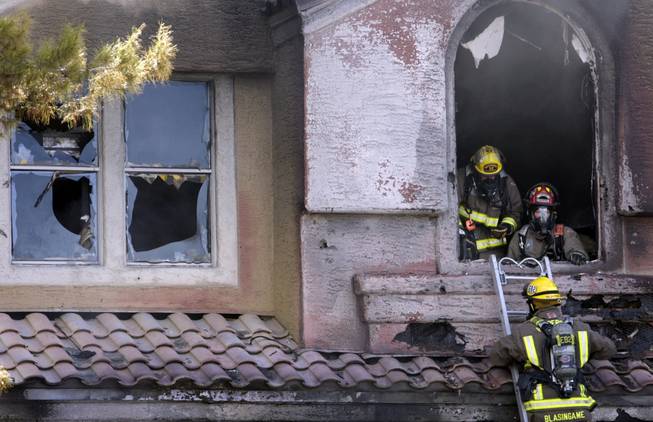Saturday, April 5, 2014 | 2 a.m.
Disaster could happen to anyone at any time.
A stove burner left on too long, a lit cigarette slipped between the fingers during an impromptu nap, an electrical outage short. Within seconds a flame could spark, setting fire to the house or apartment.
The sirens wail down the street, signaling firefighters’ arrival, but it’s often too late. Most items — clothes, medication, photo albums, electronics — are burned or melted, or they’ll be soaked beyond use.
The family or occupants become lost. The place once called home becomes an unrecognizable charred and barren wasteland. Shock settles in.
What happens next? Where do you go?
That’s where the American Red Cross of Southern Nevada comes in. A group of volunteers from the nonprofit’s Disaster Action Team responds to significant fires across the valley to help ease the transition for the victims.
Diane Orgill has been responding to fires and disasters over the past six years. She said the Red Cross averages about one fire response every 18 hours. Each person’s situation is unique, but almost everyone goes through the shock. They’re there to help people land on their feet.
Here are steps the Red Cross typically goes through when someone is displaced from home by a fire:
Home inventory: The first step involves determining what a person lost in the fire and what still can be used. This enables the Red Cross to determine what people might need, whether it’s a clothing pack, diapers for their children or contacts for medication.
Give them comfort: Everyone reacts differently to a fire. Some shiver in shock; others start focusing on other tasks, effectively blocking the fire from their mind. The toughest fires are the ones where a person endures a loss or injury, whether it’s to a person or pet.
Orgill tries to do whatever she can to comfort the person. Sometimes that’s putting her arm around them; other times it can be a simple conversation. The volunteers will never say everything is going to be OK. “Because it isn’t OK,” Orgill said. “We just let them know we’re there for them to get them on the road to recovery.”
Support: Every displaced household receives a prepaid credit card and a caseworker. The money pays for food, clothing, medication (if needed) and lodging. The amount is determined based on the local cost of living and number of residents, but Orgill said it was typically enough to last about three days in a hotel of their choosing, or a week in a weekly motel. During that time, a caseworker helps victims find a long-term solution for shelter while their home or apartment undergoes renovations. Most times, an insurance company will help the occupant find a temporary place to stay. But not everyone has insurance.
Long-term support: If a victim doesn’t have insurance or faces long-term expensive renovations, the caseworkers direct them to a variety of nonprofits for help, Red Cross spokesman Lloyd Ziel said. Victims can turn to Help of Southern Nevada as a shelter of last resort while they work toward affording a new home. Meanwhile, the Burn Foundation offers additional money for clients in need, Salvation Army provides clothes, and Three Square and Bishop Pantry provide food.
Release: The goal of the disaster team and caseworkers is to help victims regain their independence and take control of their recovery. Sometimes it takes a day, other times it could take weeks. People find friends to stay with or family to help them, they reach their insurance agents or social services, and recover.
“Once they back off a bit, they get over the shock,” Orgill said. “They figure out what do.”


Join the Discussion:
Check this out for a full explanation of our conversion to the LiveFyre commenting system and instructions on how to sign up for an account.
Full comments policy